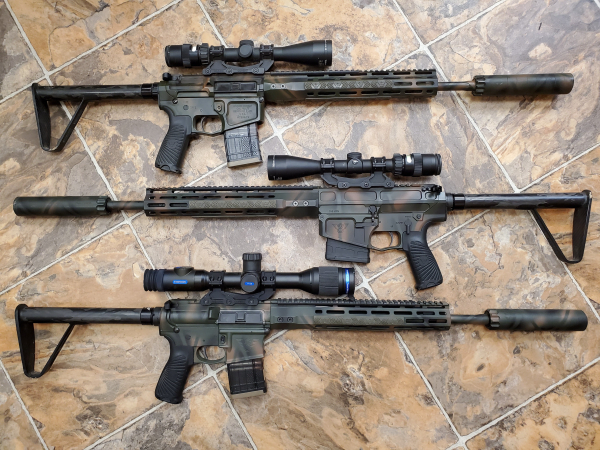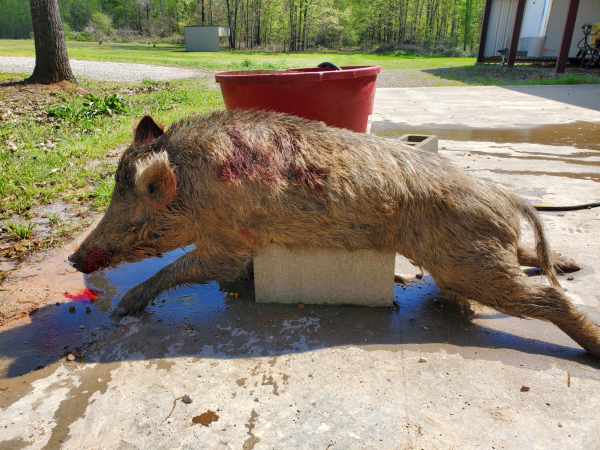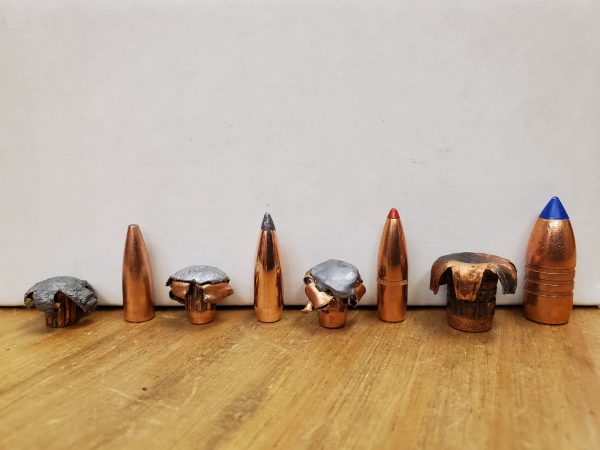Hog Hunting Ballistics
By Bill Wilson, Wilson Combat

I’ve been looking forward to writing this installment since the terminal performance of various bullets fascinates me, and I’m always testing to see how bullets perform in the real world. Gel testing is excellent if that is all you have access to, but real-world testing and killing game with a bullet is the final test of how it performs. What I mean by real-world testing is I shoot into an animal cadaver and recovering the bullet either from the carcass or from the water after the bullet passes through the carcass. Since I live on a Texas ranch with access to 14,000 acres of prime hog hunting, doing this testing is easy for me.
I used to be in the camp of deep penetration, controlled expansion, and high weight retention with bullets like the Barnes TSX and Swift A-Frame being my favorites. However, I got tired of having to find hogs that I had shot well that still ran up to 75 yards into a thicket, so I got on a quest to find bullets that rapidly incapacitated them. What I learned is that while my old favorites such as the Barnes TSX, Swift A-Frame, and various bonded bullets are excellent choices for big bears and Cape buffalo, they aren’t ideal for whitetail deer and hogs.
What I’ve found to work the best is a bullet that will penetrate at least to the center of the animal (12-inch or so for a bog boar), expand rapidly to twice its original diameter and shed 20-25 percent of its weight by flinging pieces of the bullet in random directions. This combination of terminal performance will put even the biggest and toughest boar on the ground quickly if vital organs are damaged. The 20-25 percent of the bullet that penetrates randomly often results in a shot that misses the spine and fails to sever it, to injure it enough to incapacitate the hog.

Regarding bullet weight, as my friend and bullet engineer Joel at Speer told me, “there is no substitute for bullet mass.” For all-around hog hunting, since you never know whether you will get a shot at an 80-pound sow or a 250-pound boar, I always go with a bullet that will give me a little bit of margin for error on the 250-pound or bigger boar. For me, that means 30-caliber and 130-grain.

Here are bullet choices that I have tested and proven to meet the terminal performance criteria above.
Remington Core-Lokt. Possibly killed more game in .30-30, .308 and .30-06 than any other bullet ever developed.
Hornady Interlock. This time-proven bullet performs very similarly to the Core-Lokt.
Hornady SST. This bullet in 165gr is my favorite in the .308 Win or .30-06, and the 150gr .300 Savage variant is my go-to bullet for nighttime hog hunting with my thermal equipped 300 HAM’R rifles.
Hornady FTX. The 200gr FTX out of a .358 Win is the most practical combination of moderate recoil and terminal performance I’ve ever seen. I really like the 135gr out of my 300 HAM’R rifles too.
Speer HOT-COR. These are one of my personal favorites, and I’ve killed hundreds and hundreds of hogs with the 130gr HAM’R HOT-COR in my 300 HAM’R rifles.
In the next installment, we’ll discuss hog hunting gear.